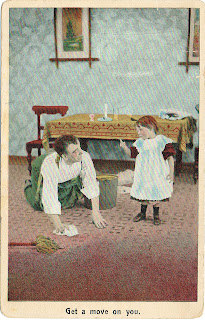This morning I went to Tolworth Postcard Fair and I had some amazing finds! The most intriguing postcard of them is the one below:
I cannot quite make the writing, but on top left it's written: 'HIEROGLYPHICS found at Pompei. "E.E."'. Then there is a smaller postcard of Windermere glued on. On the right there is more writing [which I cannot easily read] and some sketches of what it seems like a daily calendar.
In the back the address is written with some beautiful calligraphy. It was posted on 24 July 1901 from Ambleside and a half penny stamp commemorating Queen Victoria's Jubilee was used.
































